Stay in the know on all smart updates of your favorite topics.
Waag Open: Quantum game night
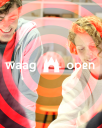
Bij de eerste editie van Waag Open in het nieuwe jaar duik je spelenderwijs dieper in kwantumtechnologie. Kom langs bij deze game night op donderdag 8 januari en corrigeer samen met je medespelers fouten in kwantumcomputers.
Waag heeft in samenwerking met Universiteit Leiden een digitaal spel ontwikkeld, waarbij je jouw creativiteit inzet voor foutcorrectie in kwantumcomputers. Menselijke vindingrijkheid is nog altijd van grote waarde bij het oplossen van problemen. Precies dit is wat een machine learning-model nodig heeft om fouten in kwamtumcomputers ook op grote schaal te kunnen opsporen. Deze avond speel je het spel en leer je over kwantumtechnologie.
We trappen de avond af met een interactief gesprek over de maatschappelijke impact die kwantumtechnologie kan hebben. Aan het einde van de avond zijn we benieuwd naar jullie ervaring met het spel.
De avond wordt geleid door (spel)ontwerper Douwe-Sjoerd Boschman. Voertaal tijdens dit evenement is Engels. Voorkennis van kwantumtechnologie is niet nodig!
Programma
| 19:30 - 19:45 uur | Welkom & introductie |
|---|---|
| 19:45 - 20:15 uur | Interactief gesprek over maatschappelijke impact van kwantumtechnologie |
| 20:15 - 21:30 uur | Spelen van het kwantumspel |
Over Douwe-Sjoerd Boschman
Douwe-Sjoerd Boschman is freelance conceptontwerper voor interactieve media en schrijver van de prentenboeken serie 'Stout Konijn'. Als spelontwerper creëert hij dwaalsporen door de natuur, educatieve bordspellen over quantum technologie maar ook workshops en e-learnings – zoals de Nationale AI-cursus voor de Creatieve Industrie – over de invloed van nieuwe technologie op onze samenleving.
Toegankelijkheid
Mocht je krap bij kas zitten en wel graag aan dit evenement willen deelnemen, neem dan contact op met sanna [@] waag [punt] org. Het Waag-gebouw is niet toegankelijk voor bezoekers met een mobiliteitsbeperking. Bekijk hier onze toegankelijkheidsinformatie.
Waag Open
Elke eerste donderdagavond van de maand opent Waag haar deuren! Kom langs om te discussiëren en te doen. Want we gaan niet alleen in discussie over maatschappelijke thema's en de toekomst – je leert daarnaast ook altijd iets praktisch. Iets dat je altijd al hebt willen uitproberen, zoals de 3D-printer in het FabLab, of juist iets dat je nooit had verwacht, zoals uitpluizen hoe DNA in elkaar zit in ons biotech-lab. Waag Open vindt plaats in de maakplaatsen op de eerste en tweede verdieping van het historische Waaggebouw op de Nieuwmarkt.
Sousveillance: Civic Surveillance of Surveillance Cameras

How can citizens reclaim transparency in a world increasingly shaped by networked safety and enforcement cameras? Join our ThingsCon workshop to explore the power of sousveillance—using the tools of surveillance to scrutinize the systems that watch us.
Networked safety and enforcement cameras increasingly shape urban life, yet their presence and function often remain opaque. This workshop explores how citizens can turn the tools of surveillance back onto the systems that watch them: Redirecting object recognition to identify street camera's for civic scrutiny. Building on several camera spotting tours supported with various versions of a “mobile transparency app”, we introduce a new prototype that uses object recognition to detect street cameras and log them through a civic annotation workflow.
The workshop is for anyone interested in civic tech, democratic oversight, and human-scale alternatives to opaque “smart city” systems. Together, we explore how civic sousveillance might evolve into a deeper practice of scrutinizing—and reshaping—the technologies embedded in our streets.
More info and tickets: https://thingscon.org/events/things-2025
More info on the Human Values for Smarter Cities research project we are conducting: https://humanvaluesforsmartercities.nl/
How to maintain good intentions in the smart city?

During this ThingsCon Salon, we explore how to give good intentions a lasting place in smart city projects. Join us!
On October 29th from 16:00-19:00 we will be at the stunning Scheveningen Pier for a workshop and talks on how to give good intentions a lasting place in government digital projects. Sign up here!
What is the Thingscon Salon about?
When you interact with the municipality, you often first encounter a digital tool: a website, a menu system, an algorithm, or a parking scan car. There are important reasons behind such digital systems: they're convenient and often efficient.
But if things go wrong, citizens shouldn't get lost in the digital reality. That's why the municipality promises its residents, for example in a coalition agreement, the human dimension in the digital city. And according to project plans, a digital tool should be fair, accessible, transparent, and just.
These kinds of good intentions are formulated before or at the beginning of development processes, but can sometimes slip out of view along the way. During procurement, development and implementation, choices are made that later seem to clash with the original intentions.
How do we design so that good intentions remain leading not just at the beginning, but also during execution?
During this ThingsCon Salon, we explore how to give good intentions a lasting place in government digital projects. Using one or two case studies, we'll develop concrete methods in a workshop to make intentions tangible and maintain them throughout the entire process – from administrative agenda to technical implementation and practical, daily use.
This Salon is co-organized by the 'Human Values for Smarter Cities' project from the Amsterdam University of Applied Sciences and Smart City The Hague. The program consists of a workshop and several speakers.
Tessa Steenkamp and Mike de Kreek will host the workshop.
Date: Wednesday October 29th
Time: 16:00-19:00
Location: Infopunt Scheveningen
Curious about... Het lichaam als laatste grens

Hoe technologie en wetenschap ons menszijn veranderen
Wat betekent het om mens te zijn in de 21e eeuw, waarin mens en technologie steeds inniger zijn verstrengeld? Kunstmatige intelligentie, genetische modificatie, neurotechnologie en medische innovaties veranderen niet alleen de wereld om ons heen, maar ook de grenzen van wie wij zijn. Ons lichaam, ons bewustzijn, onze identiteit en zelfs onze ervaring van de werkelijkheid zijn in beweging.
Op 5 november verandert A Lab in een toekomst-experience waarin lichaam en geest samensmelten met technologie en wetenschap. Tijdens de zesde editie van Curious About… onderzoeken we hoe technologie ons menszijn verandert. Hoe het onze omgeving vormgeeft, welke relaties we aangaan, welke ethische grenzen op de proef gesteld worden en hoe technologie een verlengstuk wordt van jou als mens, of zelfs onder je huid kruipt? Een programma waarbij je je ogen uitkijkt en je aan het denken wordt gezet wie wij als mens zijn en worden nu technologische ontwikkelingen voorbij razen.
Nieuwsgierig? Meer info & tickets vind je op a-lab.nl.
Wat kun je verwachten?
Tijdens de interactieve demo’s door A Lab, ga op thema-expeditie langs ervaringen, kunst, verhalen, wetenschap en toekomstvisies:
... Dompel je onder in een zintuigelijke VR-ceremonie van Nemo Vos, waarin spiritualiteit, wetenschap, lichaam en tech samensmelten tot één ervaring
... Robin Coops presenteert een virtuele wereld vol verlangens, intimiteit en consent, en onderzoekt hoe onze digitale relaties ons menszijn raken.
... Muzikant en innovator Chagall geeft het digitale een ziel en laat met muziek lichaam en tech samensmelten
... Ervaar de NextMind technologie en stuur digitale systemen aan met je gedachten
... Hoe werkt dat eigenlijk na je dood, wil je dan doorleven in AI?
... Verken de grenzen van jouw lichaam tijdens een geleide meditatie.
... Krijg een inkijkje in de nabijheid en troost die een machine aan een mens kan geven.
... Ontmoet Phil, die dankzij een geïmplanteerde chip betaalt, reist en deuren opent met zijn hand.
... Ontdek hoe liefde en technologie samengaan met de karakters uit de Human docu AI Love.
... Onderga het rubber hand experiment zelf en ervaar hoe je brein lichaam en realiteit construeert
Keynotes & panel
Na afloop van de expeditie, ontvangen we vier keynote speakers en het panel op het podium.
... Johan Hoorn (Hoogleraar Sociale Robotica & AI) ontrafelt de ontwikkelingen door een technologische bril: wat gebeurt er al en waar bewegen we naartoe?
... Ajuna Soerjadi (Directeur Data-Ethiek, Jonge denker des Vaderlands en TED spreker) schijnt haar licht op ethische vraagstukken en grenzen: hoe raakt technologie mens en maatschappij?
... Marleine van der Werf (Filmmaker & Visual Artist) bevraagt in een intieme, zintuiglijke ervaring onze kwetsbare band met het lichaam en bewustzijn, met haar multidisciplinaire ‘Disembodied' project.
... De blinde Simon Dogger (prijswinnend ontwerper, van o.a. Dutch Design Award) neemt ons met zijn persoonlijke verhaal mee in hoe technologie en zintuiglijkheid elkaar kunnen versterken.
Het programma overzicht
12:30 - Inloop
13:00 - Opening
13:00 - Interactieve demo's door A Lab
15:30 - Keynotes & Panel
17:00 - Napraat & borrel
Meer info via a-lab.nl
Tickets via Eventbrite
Hackathon Power of Europe @ Amsterdam/Oosterpark

Join 100 builders to fine-tune LLMs, build RAG and agentic systems — all using powerful, emerging European AI tech.
<em>This hackathon is brought to you by Tech Makers, Build Europe, and</em> AI for Good<em>.</em>
Power of Europe Hackathon
From fine-tuning LLMs to building next-gen RAG pipelines and agentic systems, this hackathon is your launchpad to experiment with the latest AI patterns using Europe's rich and often underexplored tech ecosystem.
<strong>Goal</strong>: build a working "AI demo" using European-made tech as much as possible, whether that’s RAG, smart agents, fine-tuned LLMs, or fresh AI ideas.
<strong>Demo</strong>: at the end of the day you will be given the opportunity to share what you built, what you learned, and your ASK: feedback, help, or just encouragement to keep you going!
Whether you're playing with open models, exploring modular architecture, or rethinking how AI tools are built and deployed, this is the place to connect with others shaping the future.
Let’s build the next wave: locally grown, globally relevant.
Uncover the Hidden Tech of Amsterdam’s Streets

Join us on June 25 for the Sensor Discovery Tour, a guided walk through the bustling Leidseplein area — a real-time lab for smart city technologies. As sensors increasingly shape how we move, live, and feel safe, concerned citizens are asking: Who sees what, and why?
Combining the new Transparent City AR app prototype and your own phone we’ll reveal the invisible digital layer of the city — from cameras to air quality sensors — and explore what these devices measure, who owns the data, and how they impact our rights.
This isn’t just a tour — it’s a growing citizen-led movement for digital transparency in public space. Together, we’ll reflect on the ethics, ownership, and social value of urban tech. Led by experts in sensor policy and urban innovation, the tour invites Amsterdammers, technologists, designers, and policymakers to reimagine the smart city as open, visible, and accountable.
🕓 25 June 2025 | 16:00–18:00
📍 Start: Leidseplein | End: De Balie
🎟️ Free – registration required
Waag Open: de slimste deurbel
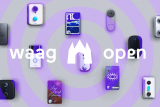
Weet jouw deurbel alles van je buren? Of juist van de privacywetten? Welke deurbel plaatst de grappigste opnames op het internet? Kortom; wie heeft de slimste deurbel?
Een op de vijf huizen in Nederland heeft inmiddels een slimme deurbel, met als populairste deurbellen die van Amazon (Ring), Google (Nest) en het Chinese Anker (Eufy). Maar de slimme deurbel heeft ook een keerzijde; geen van die fabrikanten toont een oprecht initiatief om het ontwerp van hun producten op de Nederlandse privacywetten aan te passen. Ze slaan beelden veel langer op dan het advies van de Autoriteit Persoonsgegevens (AP), laten het nooit merken als ze filmen, hoogstens met een sticker die voorbijgangers op de hoogte zou moeten stellen van actief cameragebruik.
Tijdens Waag Open: De slimste deurbel bespreken we de recente ontwikkelingen rond de slimme deurbellen met ontwerper Roos Groothuizen. Ook ga je aan de slag met je eigen slimme deurbel! Aan welke voorwaarden wil je dat jouw slimme deurbel voldoet? Bouw je een slimme deurbel die helemaal in lijn is met privacywetten? Een deurbel die het buurtgevoel versterkt? Of misschien juist een bel die meteen alle beelden automatisch op internet zet?
Programma
| 19:30 - 19:45 uur | Welkom en intro |
|---|---|
| 19:45 - 21:15 uur | Presentatie Roos Groothuizen |
| 21:15 - 21:30 uur | Smart Deurbel ontwerpen |
| 21:30 - 22:00 uur | Nabespreking en borrel |
Remote Sensing (Satellites), Vrijheidscollege

Dimitri Tokmetzis (1975) is a historian and investigative journalist. He leads the data team of Follow The Money and wrote the books Je hebt wel iets te verbergen (2016) and De digitale Schaduw (2012). He is currently very much involved in remote sensing, which allows you to obtain information about a person, animal or thing without making physical contact. In his Freedom Lecture he discusses power and freedom in a time when the sky is full of satellites.
The intention is to end the evening with an interactive debate based on the lecture!
Send an email to SensemakersAMS@protonmail.com if you want to join!
Sensemakers #IoTDay celebration: Easter Workshop

For the 15th year we're celebrating International IoTDay, it's all about sharing knowledge about how to create your own projects and connecting with people in the process!
We’re excited to share a fun and engaging project with you! Join the Easter workshop, creating a beautiful personalized ornament that you can lasercut and program yourself! (of course we'll help!)
More information on the project can be found here:
https://sensemakersams.org/wp-content/uploads/2024/12/Sensemakers-XMas2024-Project.pdf
There is a fee involved, but we have 2 'Pay-It-Forward' kits available for those low on budget this holiday season. Just dm Manon if you want one of those!
And of course we'll have some free alternatives like experimenting with 3D printing your own Easter-buddy:-)
Speculative Design Workshop - Futuring the City with Generative Things
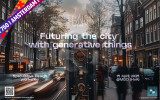
Imagine a world where everyday objects are imbued with the power of generative AI. What possibilities and challenges would emerge? ThingsCon aims to explore this frontier by inviting designers to create provotypes of the near future “generative things”.
To ignite imagination and foster meaningful discussions, we like to use the concept of “provotypes” – provocative prototypes of generative things. These tangible glimpses into tomorrow are catalysts, opening up critical dialogues about our impending relationships with AI-infused objects.
The exhibition “Generative Things” premiered at TH/NGS 2024 on 13 December 2024 in Volkshotel Amsterdam and will travel to other places in 2025, sparking conversations and imagination. ThingsCon organizes this initiative in collaboration with the Master Digital Design of Amsterdam University of Applied Sciences and Waag Futurelab.
15 April. Speculative Design Workshop; An Immersive Future Zine
Connected to Salon, we organize a speculative design workshop where we create a Future Zine that brings the provotypes to life using speculative design methodologies. The outcomes will be used to create immersive experiences with the provotypes that can be presented and discussed with the visitors of the future fest in June.
Preliminary program of the SDW
09:30 Introduction and icebreaker
10:00 Inspirations from the future
10:30 Discuss in groups per provotype possible future scenarios
11:30 Share and sync the different narratives
12:30 lunch
13:30 Create a contribution to the Future Zine
16:30 Share and wrap-up
The Future Zine is proposed as an online publication with immersive capabilities, the framework will be prepared by ThingsCon.
Location
The Speculative Design Workshop will take place Tuesday 15 April at the location of Master Digital Design, Theo Thijssen Huis building, 4th floor, Wibautstraat Amsterdam.
Read more on the backgrounds of the project on the website.
ThingsCon Exhibition and Salon: Provotypes interactions with city and citizens
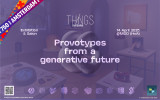
Imagine a world where everyday objects are imbued with the power of generative AI. What possibilities and challenges would emerge? ThingsCon aims to explore this frontier by inviting designers to create provotypes of the near future “generative things”.
To ignite imagination and foster meaningful discussions, we like to use the concept of “provotypes” – provocative prototypes of generative things. These tangible glimpses into tomorrow are catalysts, opening up critical dialogues about our impending relationships with AI-infused objects.
The exhibition “Generative Things” premiered at TH/NGS 2024 on 13 December 2024 in Volkshotel Amsterdam and will travel to other places in 2025, sparking conversations and imagination. ThingsCon organizes this initiative in collaboration with Master Digital Design of Amsterdam University of Applied Sciences, Waag Futurelab, and is part of the Amsterdam 750 futures program.
14 April: exhibition and workshop
Next up, we’re taking Generative Things to Amsterdam University of Applied Sciences. Our next public event, scheduled for late 14 April, will feature:
- An updated exhibition with new and refined provotype designs
- An in-depth reflection workshop relating the provotypes to city life
We’re revisiting the provotypes to create “situated designs” that respond to Amsterdam’s unique context. By partnering with local societal organizations, we’ll develop specific scenarios to test our provotypes in real-world settings, bringing the future of Generative Things to life in our city’s streets and spaces.
The outcomes will be an inspiration and a point of departure for a speculative design workshop on 15 April to create a future zine. We have a separate RSVP for this workshop day.
The program of the Salon:
14:00-15:00 Visit the exhibition with provotypes
15:00-17:00 Workshop to sketch out interactions in the city with each provotype
- introduction on the backgrounds
- short 3 min pitches by designers of the provotypes
- discussing the provotypes in relation to the categories
- formulate takeaways
17:00-19:00 Share results, drinks
If you can not make it to the workshop but like to see the results, feel free to drop by at 17h.
Location
The Salon and the Makeathon will take place Monday 14 April at the location of Master Digital Design, Theo Thijssenhuis building, 4th floor, Wibautstraat Amsterdam.
Read more about the background of the project on the website.
The Ins and Outs of Employment Background Screening in the Netherlands, Sweden (and Europe)

The Swedish Chamber of Commerce, in collaboration with our esteemed Patron member Validata, cordially invites you to an exclusive networking event on The Ins and Outs of Employment Background Screening in the Netherlands, Sweden, and Europe.
Join us as Harm Voogt, Managing Director of Validata Group, shares insights into the company’s journey, its expansion into Sweden, and strategies for navigating an undeveloped market. He will also discuss key industry trends shaping the future of employment screening. Following this, we will explore the latest developments, challenges, and best practices in employment background screening across Europe, providing valuable insights for businesses and professionals alike.
Demoday #27: What is ethical mobile software for your phone?
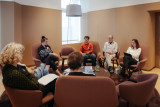
We depend heavily on Big Tech companies like Google, Meta, Apple, Amazon, and more. And with your smartphone, there is no escaping them. Even if you don’t use social media, and use anti-tracking software, some of your data will still be shared and sold. This can make you feel pretty uncomfortable. Especially, since most of these tech companies are in the USA and China. This is why, in this session, we worked on the question: Is it possible to develop mobile software which is ethical and functional?
Danny Lämmerhirt from Waag Futurelab works on the MOBIFREE project. This project aims to change the development and use of mobile software in Europe by citizens, businesses, non-profits and governments. In doing so, they want to support the emerging movement for ethical mobile software consisting of organisations that adhere to European values such as openness, privacy, digital sovereignty, fairness, collaboration, sustainability, and inclusivity.
In this session, Danny introduced us to the smartphone they are working on. This smartphone has its hardware from Fairphone (an ethically produced smartphone) and uses a privacy-friendly operating system: Murena. This operating system is an Android fork that doesn’t come with standard tracking software. On top of that, it has an app store with only ethical apps and is connected to an ethical European cloud.
Outcomes
We discussed with the group what values we found most important in an ethical mobile phone when using it for work. The values that were deemed most important by the group were:
- Autonomy: A smartphone allows working wherever and whenever you want. It is an incredibly powerful tool that you can use for so many different things, and it fits in your pocket.
- Independency: We’ve become incredibly dependent on our smartphones. When you lose your phone, you no longer have your money, your public transport card, a map to find the way, etc. On the other hand, this also means that you don’t need to travel with a bag full of tools every time you leave the house.
- Privacy: Constantly being tracked has become normal, but that doesn't mean we’re happy with it. Right now, you don’t have a choice. It would be nice to have a choice, to either pay with your data, or with money.
- User-friendliness: An ethical and privacy-friendly smartphone sounds great, but it also means that you can no longer use many of the apps that you’re used to. Will it still be practical to use? And will it be intuitive? We are all used to a certain way of working and are hesitant to change.
This discussion was definitely food for thought. We all want a more ethical phone, but are not willing to sacrifice much in return…
Are you interested in trying out this ethical smartphone? The MOBIFREE project is currently looking for people who can test this smartphone. They are looking for young adults, civil servants, mobile software developers, and professionals working in humanitarian organisations.
<strong>Would you like to participate, or do you have any questions about this project? Please contact Noor at noor@amsterdaminchange.com. Special thanks to Danny Lämmerhirt for this interesting session.</strong>
De Staat van het Internet 2025
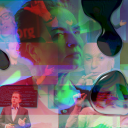
Tijdens de Staat van het Internet steekt Waag Futurelab jaarlijks de peilstok in het internet. In dit 30-jarige jubileumjaar van Waag wordt de lezing gegeven door oprichter en directeur Marleen Stikker.
Nu techmiljardairs toegang tot het Witte Huis hebben, dringt het besef (eindelijk) door dat we extreem afhankelijk zijn van big tech. Met één decreet van Trump of een druk op de knop van Musk is onze samenleving volledig ontwricht. Volgens Rutte, secretaris-generaal van de NAVO, moeten we ons voorbereiden op oorlog. De vraag is of we die oorlog in het digitale domein niet al verloren hebben. Kunnen we onze grip terugwinnen?
Marleen Stikker heeft hierop het antwoord. Tijdens de zevende editie van de Staat van het Internet zet Stikker uiteen hoe we terug kunnen naar een internet waar we zelf controle hebben over de technologie en onze data. Niet het aandeelhoudersbelang of het verdienvermogen van ‘de BV Nederland’ moet centraal staan, maar de weerbaarheid en het handelingsperspectief van Europese burgers, organisaties en democratische instituties.
Dat betekent niet alleen de rug recht houden in het handhaven van de noodzakelijke Europese wetten, maar ook het investeren in kennis en technologie op basis van publieke en democratische waarden, de zogenaamde EuroStack. Er is al een eerste stap gezet door maatschappelijke en culturele organisaties en mensen om minder afhankelijk te worden van grote technologiebedrijven. Welke alternatieven voor big tech zijn er al, hoe maken we deze alternatieven samen tot een succes? En welke rol kunnen sociale en maatschappelijke bewegingen én individuen hier in spelen?
Na de lezing vindt een panelgesprek plaats. Het panel wordt gemodereerd door Dymphie Braun, programmamaker & facilitator die gedreven wordt door de principes van gelijkheid en inclusie. Haar missie is om creativiteit te promoten als middel voor sociale rechtvaardigheid.
Programma
| Inloop | 15:30 - 16:00 uur |
|---|---|
| Lezing | 16:00 - 17:00 uur |
| Panel | 17:00 -18:00 uur |
| Borrel | 18:00 - 19:00 uur |
Panel
Bert Hubert is de oprichter van PowerDNS, software waar een groot deel van het Internet in Europa op draait. Daarnaast werkte hij voor de AIVD. Tegenwoordig doet Bert DNA onderzoek en was hij tot voor kort lid van de Toetsingscommissie Inzet Bevoegdheden Inlichtingen- en Veiligheidsdiensten. Tegenwoordig is hij part-time technisch adviseur bij de Kiesraad, en lid van de commissie van advies van de Autoriteit online Terroristisch en Kinderpornografisch Materiaal.
Savriël Dillingh is marktfilosoof en bedrijfsethicus aan de Erasmus Universiteit Rotterdam. Hij doet onderzoek naar hoe politieke keuzes de vrije markt sturen, en naar hoe een nieuwe, eerlijkere economie er concreet uit kan zien. Savriël publiceerde o.a. in NRC, De Volkskrant, Trouw, Het Parool en De Groene Amsterdammer, en schrijft momenteel over de tirannie van de aandeelhouder.
Tessel Renzenbrink is Communication Officer bij NLnet, een stichting die zich inzet voor een vrij, robuust en open internet voor iedereen. Samen met Ronny Lam maakt ze de NGI Zero podcast waarin ze in gesprek gaan met mensen die bouwen aan het Next Generation Internet. In 2021 werd ze co-directeur van Netwerk Democratie en zette ze zich in voor een vitale democratie in een digitale samenleving. Tessel heeft een master filosofie en maakte in 2020 een post-collapse mesh netwerkapparaat als eindproject voor de FabAcademy.
Over Marleen Stikker
Marleen Stikker is oprichter en directeur-bestuurder van Waag Futurelab. In 1993 stond zij aan de wieg van het internet als 'burgemeester' van De Digitale Stad. Waag is sinds de oprichting in 1994 uitgegroeid tot een leidend Europees onderzoeksinstituut voor technologie en samenleving. Marleen was betrokken bij de oprichting van o.a. PICNIC, Creative Commons Nederland, Fairphone, Public Spaces en Meentcoop.
Ze is Professor of Practice aan de Hogeschool van Amsterdam, lid van de Adviesraad Wetenschap, Technologie en Innovatie en board-lid van de Amsterdam Economic Board en een van de voorzitters van het Overlegorgaan Fysieke Leefomgeving. Ze is auteur van het boek 'Het internet is stuk, maar we kunnen het repareren'. En heeft een eredoctoraat van de Vrije universiteit en is winnaar van de Felipe Rodriguez Award.
Toegankelijkheid
Mocht je krap bij kas zitten en wel graag aan dit evenement willen deelnemen, neem dan contact op met thieu [@] waag [punt] org.
Voor meer informatie over de toegankelijkheid van de locatie zie de toegankelijkheidspagina van Vlaams Cultuurhuis de Brakke Grond.
Over 30 jaar Waag
Dit jaar bestaat Waag Futurelab 30 jaar. Van het eerste ‘sociale medium’ De Digitale Stad, toegankelijk voor een breed publiek, via het ontwerpen van een duurzame modulaire Fairphone, of de eerste opleiding voor Biohackers in Europa, tot aan een advies aan de staatsecretaris voor Digitale Zaken en een burgermeetnetwerk in Noord-Holland: al 30 jaar werkt Waag aan grip op technologie voor iedereen. Die grip op technologie staat dit jubileumjaar centraal, in onze verhalen en in onze programmering.
Bekijk de eerdere edities van de Staat van het Internet.
<strong>Tickets: https://waag.org/nl/event/de-staat-van-het-internet-2025/</strong>
Responsible AI Congres
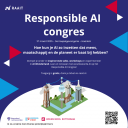
Hoe kun je kunstmatige intelligentie (vaak afgekort tot AI) zo inzetten dat mens, maatschappij en de planeet er baat bij hebben? Binnen het programma Responsible Applied Artificial InTelligence (kort: RAAIT) staat deze vraag centraal. Met drie hogescholen (Amsterdam, Rotterdam en Utrecht) en een hoop praktijkpartners ontwerpen en ontwikkelen we samen verantwoorde AI-oplossingen.
Wat er allemaal mogelijk is, laten we je graag zien op ons congres op donderdag 27 maart 2025! Je bent hiervoor van harte uitgenodigd.
📆 Donderdag 27 maart 2025
⏲ 09:30 - 17:00 uur
📍 De Koepel | Koepelplein 1 | 2031 WH, Haarlem
Dompel je onder in inspirerende talks, workshops en experimenteer in AI Wonderland. Leer en innoveer met verantwoorde AI, en dat op een heel bijzondere locatie: de oude koepelgevangenis van Haarlem. Na deze dag ga je naar huis met een goodiebag vol nieuwe inzichten/tools die je meteen kunt inzetten!
Benieuwd wat er zoal te doen is op 27 maart? Graag lichten we een paar onderdelen voor je uit:
· Keynote Noëlle Cicilia - Responsible AI leader ‘24 & AI Person of the Year '25
o Responsible AI voor iedereen?
Responsible AI krijgt steeds meer aandacht, en terecht. Maar terwijl grote bedrijven hier volop in investeren, blijft het voor kleinere organisaties vaak een uitdaging. De complexiteit en kosten kunnen een drempel vormen, terwijl verantwoord AI-gebruik juist voor iedereen toegankelijk zou moeten zijn. In deze keynote neemt Noëlle, oprichter van Brush AI, je mee in hoe zij Responsible AI toepasbaar maakt voor kleinere projecten en organisaties met beperkte budgetten.
· Workshop Wilco Verdoold - Hogeschool van Amsterdam
o Van idee tot AI: leer je eigen GPT bouwen en inzetten
Wil jij leren hoe je generatieve AI praktisch en verantwoord kunt inzetten in jouw organisatie? Heb je al ervaring met generatieve AI, maar nog nooit zelf een AI-assistent gemaakt? Tijdens deze hands-on workshop neemt Wilco je mee in het proces van het bouwen van je eigen GPT.
Geen theoretische verhalen, maar praktische kennis die je de volgende dag al kunt toepassen!
Meer dan de helft van het aantal beschikbare tickets is inmiddels geclaimd, dus mocht je collega’s of relaties kennen voor wie dit event interessant kan zijn: stuur deze mail vooral door en claim je ticket:
Waag Open: Wat zou de ideale internetroute zijn voor jouw data?

Wat is jouw dagelijkse schermtijd? Heb je wel eens nagedacht over de routes die jouw gegevens afleggen, wanneer je een email verstuurt, gebruik maakt van een zoekmachine of iets plaatst op sociale media? Het maakt niet uit of we het over apps hebben, online streaming, of simpele webpagina’s bekijken – data over ons reizen door de hele wereld.
Ontdek tijdens Waag Open hoe jouw gegevens via internet reizen en ontwerp je mee aan de meest wenselijke routes. Je gebruikt Packet Run, een software-tool waarmee je kunt zien hoe het internet data routeert. Het nemen van deze ideale route doen we al spelenderwijs. We bespreken wat een ideale route voor jou betekent, wat voor inzicht in internet routing wenselijk is, en hoeveel controle over internet routing nodig is.
Meld je aan: https://waag.org/nl/event/waag-open-internetroutes/
Wanneer: 6 maart 2025
Tijd: 19:30 - 22:00 uur
Waar: Waag Futurelab, Nieuwmarkt 4, Amsterdam
Programma
| 19:30 - 19:45 uur | welkom & introductie |
| 19:45 - 20:45 uur | interactief spel: jouw ideale route op het internet |
| 20:45 - 21:30 uur | afsluitende discussie |
| 21:30 - 22:00 uur | borrel |
Meld je aan:
Samenwerken met een burgerpanel aan smart city technology: de scanfiets in Amsterdam
Het Human Values for Smarter Cities onderzoeksproject nodigt je uit voor een interessante middag over samenwerking met burgers en smart city tech.
📅 Dinsdag 11 februari
⏰ 15:30-17:30
📍 HvA Wibauthuis | Wibautstraat 3b, 1091 GH Amsterdam | Kamer: 10A18
Programma:
• 15:30 Inloop
• 15:45 Sessie
• 17:00 Borrel
• 17:30 Einde
🔍 Waar gaat het over?
Door het Machine Vision team van de gemeente Amsterdam is er het afgelopen jaar samengewerkt met een groep burgers in een onderzoeks- en ontwikkelproject rondom de inzet van een scanfiets: "Samen werken aan verantwoord scannen en herkennen voor een leefbare, schone en veilige stad".
We zijn met het burgerpanel ongeveer 14 keer bij elkaar geweest en hebben bijna net zo veel voorbereidingsbijeenkomsten gehad. Op vier momenten hebben we het project geëvalueerd, twee keer met het burgerpanel en twee keer zonder. Op 12 februari 2025 komt de samenwerking ten einde en sluiten we dit project af.
Het project was een uniek experiment voor de gemeente om in samenwerking met burgers te bepalen hoe dat ‘verantwoord’ eruit zou kunnen zien door daarbij de rechten, belangen en wensen van deze inwoners te borgen in het proces. We deden allerlei interessante ervaringen op en kwamen verschillende do's en don'ts tegen, maar ook aandachtsgebieden waar geen eenduidig antwoord op is. Veel van de do's en don'ts worden door de gemeente Amsterdam beschreven in het document "Burgerparticipatie - Whitepaper verantwoord scannen en herkennen".
Tijdens de bijeenkomst op 11 februari willen we de do's/don'ts en aandachtsgebieden delen met geinteresseerden. Doe mee aan het gesprek!
Reserveer je plek door je hier in te schrijven. Tot 11 februari!
🚀 Oproep voor organisaties in de publieke sector! Draag bij aan de ontwikkeling van ethische mobiele innovatie! 🌍
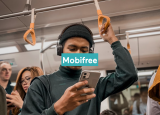
Wil jij de status quo uitdagen en bijdragen aan een mobiel ecosysteem dat privacy, duurzaamheid en ethische technologie vooropstelt?
💡 Bij Waag Futurelab zijn we vastbesloten om alternatieven te verkennen voor de datahongerige apps en apparaten die momenteel de techwereld domineren. Via ons onderzoeksproject Mobifree nodigen we organisaties in de publieke sector uit om een open-source Murena-smartphone te testen en samen met ons de toekomst van ethische, open-source mobiele technologie in Europa vorm te geven.
Dit is jouw kans om:
✅ Als organisatie Murena-smartphones te testen, voorzien van open-source apps.
✅ Feedback te geven die direct invloed heeft op de volgende generatie mobiele oplossingen.
✅ Bij te dragen aan een duurzaam, veilig en inclusief alternatief voor Big Tech.
🔍 Wat kun je verwachten?
- Doe mee aan een pilot van twee maanden (februari–oktober 2025) en verken hoe open-source tools jouw werk- en persoonlijke behoeften kunnen ondersteunen.
- Test baanbrekende technologie terwijl je pleit voor ethische en duurzame softwareontwikkeling.
- Maakt deel uit van een community die een privacy gerichte en Big Tech-vrije toekomst vormgeeft!
🙌 Wie kan deelnemen?
We een groep van maximaal 30 deelnemers om de volgende kerngebieden te verkennen:
- Besturingssystemen
- Messaging-apps
- Appstores
- Cloudservices
📩 Hoe kun je je aanmelden?
Stuur een e-mail naar bente[at]waag[dot]org met de naam van je organisatie, het aantal deelnemers, gekozen categorieën en een korte motivatie om mee te doen. Vervolgens zullen wij contact met je opnemen!
Doe met ons mee om mobiele technologie opnieuw vorm te geven voor een betere, privacy-respecterende Europa 🌟
TH/NGS 2024 - Generative Things
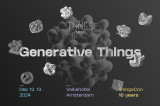
Back in November 2014, we organized the first Dutch chapter of ThingsCon in Amsterdam, after the inspiring first Berlin edition in spring 2014. After 4 years in Amsterdam, 4 in Rotterdam en 2 Covid editions, we decided to go back to Amsterdam, and also go back to Volkshotel, to mark our 10 years celebration!
Our theme for this edition: Generative Things
The inspiration for this year’s conference is the transformation of the new generative artificial intelligence in our digital lives to the physical world, the objects we use, and the places we live. What will be the physical realization of the “generative twin intelligence”? What will it mean for makers and designers of these things? How will ethics play out, and what new models of use and trust will emerge?
The program is ready. Check the latest confirmed program here. They are all inspired by this theme.
- Workshops and talks
- Exhibition with the best work
- Specially commissioned exhibition
On the latter:
We want to create an exhibition commissioned by ThingsCon to explore the next decade of living with things. We hope to inspire designers and makers of future things. We like to explain the context of an experience that ignites debate and critical thinking by engaging our community through speculative objects and things.
Our program:
🎓 <strong>Thursday</strong>: long-form workshops for even more in-depth knowledge exchange and interacting with peers.
🎉 <strong>Thursday evening</strong>: celebrating 10 years of ThingsCon with special evening program with inspirational talks, music, and drinks
🎤 <strong>Friday</strong>: the good old mix of inspiring keynotes, short project-pitches, 2-hour workshops, exhibition, and meeting each-other.
This year, the regular price for one day is <strong>100 eu</strong>, and the full conference pass is <strong>175 eu</strong>. The ticket includes entrance and catering on the conference days. You are also invited to join our special Thursday evening program.
Research Interviews Request for PhD Dissertation!
My name is Pınar Ebe-Güzgü, a PhD student at İzmir Katip Çelebi University, Turkey, currently conducting research at the University of Twente. My doctoral research focuses on social justice and disadvantaged groups in the context of smart city applications, with a particular emphasis on the mobility of elderly people (defined by WHO as people over the age of 65).
As part of my research, I conduct in-depth interviews with residents (aged 65+) of Amsterdam, caretakers of elderly individuals, and those working on (or with expertise in) smart city initiatives. The goal is to explore the mobility experiences of 65+ people in Amsterdam and develop policy recommendations to enhance social justice in urban management.
If you would like to share your experiences, your participation in this research would be invaluable. All interviews will be conducted at a time and format that suits you.
Thank you for your time and consideration. Your insights will greatly contribute to our understanding of how smart city applications impact the mobility and quality of life of older individuals.
If you are interested in participating, please reach out to me via the email address below:
p.ebe-guzgu@utwente.nl
Best regards,
Pınar Ebe-Güzgü
Stay up to date
Get notified about new updates, opportunities or events that match your interests.

